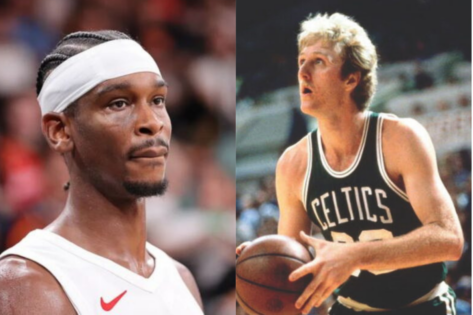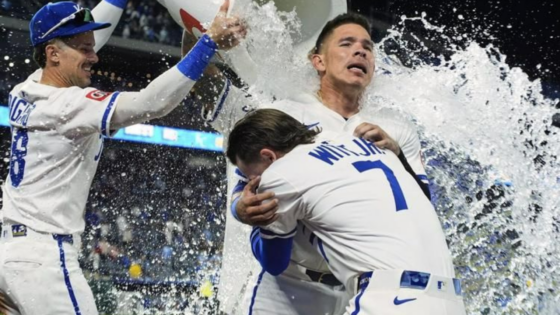“Bird Rights NBA” is a term that pops up in almost every offseason and trade deadline discussion. But what does it really mean, and why do teams care so much about them? This article unpacks everything you need to know about NBA Bird Rights—how they work, their strategic importance, and the impact they have on player movement.
Bird Rights, named after Boston Celtics legend Larry Bird, refer to a salary cap exception in the NBA’s collective bargaining agreement (CBA) that allows teams to re-sign their own free agents even if they are over the salary cap. The term originated when the Celtics wanted to re-sign Larry Bird in 1983 despite being over the salary cap. The league amended its rules to allow it, setting a precedent that evolved into the modern-day “Bird Rights” clause. Today, it serves one main purpose: allowing franchises to maintain roster continuity without being penalized for going over the cap to retain their own talent.
To understand how Bird Rights NBA clauses work, we need to first understand the concept of “cap holds.” When a player becomes a free agent, the team retains a cap hold—a placeholder salary figure tied to that player’s rights—on their books. If a team chooses to retain those rights instead of renouncing them, they gain access to Bird Rights.
Boston Celtics# 33 Larry Bird courtside during the Boston Celtics vs. New York Knicks game at Madison Square Garden on May 6, 1988. (Photo by Tom Berg/WireImage)
Players earn Bird Rights through time and consistency:
They must play for a team without being waived or changing teams via free agency.
Bird Rights accumulate over three consecutive years with the same team.
They are transferable via trades, so players don’t lose them if traded mid-contract.
When Do Bird Rights Apply?
NBA Bird Rights kick in when a player’s contract expires, and the team wants to retain them without sacrificing cap space for other moves. Teams often use Bird Rights to:
Re-sign stars or important role players.
Go over the cap to maintain roster depth.
Sign a player and then trade them (in sign-and-trade deals).
For example, the Golden State Warriors used Full Bird Rights to re-sign Stephen Curry multiple times despite being deep into the luxury tax.
Bird Rights NBA strategy is vital in today’s CBA landscape, where multiple cap levels (salary cap, luxury tax, first and second apron) restrict spending flexibility.
Types of Bird Rights
There are three types of Bird Rights in the NBA CBA: Full Bird Rights, Early Bird Rights, and Non-Bird Rights. Each category offers different financial leeway based on how long a player has been with the team.
Full Bird Rights
Full Bird Rights are granted to players who have spent three consecutive seasons with the same team without being waived or changing teams via free agency.
With Full Bird Rights, a team can:
Offer up to the maximum salary, depending on years of service and contract rules.
Re-sign the player to a contract of up to five years.
Go over the salary cap or even the luxury tax line to retain the player.
This is the most valuable type of Bird Rights in the NBA. It’s how teams keep superstars like Giannis Antetokounmpo, Jayson Tatum, or Anthony Davis without sacrificing cap room.
Early Bird Rights
Early Bird Rights kick in after just two consecutive seasons with the same team.
Key features:
Allow teams to re-sign players to a deal up to 175% of their previous salary or 105% of the league average salary, whichever is greater.
The contract must be at least two years in length.
Can still be used to go over the salary cap, but offers less room than Full Bird Rights.
This clause is ideal for retaining breakout role players. For instance, Austin Reaves re-signed with the Lakers under Early Bird Rights conditions, maximizing his salary relative to his previous deal.
Non-Bird Rights
Non-Bird Rights apply when:
A player has spent less than two years with a team, or
Has been waived and re-signed, or
Signed a one-year deal with no Bird protections.
In this case:
Teams can offer 120% of the player’s previous salary or 120% of the league minimum, whichever is greater.
Contracts can still be multi-year, but the financial bump is modest.
Teams use Non-Bird Rights mostly for bench players or veterans on minimum deals. For example, Carmelo Anthony’s deal with the Lakers in 2021 used Non-Bird Rights.
Why Are Bird Rights Important in the NBA?
Bird Rights NBA clauses are among the most powerful team-building tools under the collective bargaining agreement. Here’s why:
Cap Flexibility
In a salary-capped league, Bird Rights allows teams to spend beyond the cap without triggering restrictions on player retention. For instance:
A team can re-sign a player using Bird Rights while preserving its mid-level exception or cap space to sign others.
This is why contending teams with expensive rosters can still bring back role players.
Talent Retention
Bird Rights helps teams avoid losing star players for nothing. Even when the cap is tight, Bird Rights gives teams the financial ability to retain marquee names.
Stephen Curry’s 2017 supermax deal was only possible because the Warriors had Full Bird Rights.
Bradley Beal repeatedly re-signed with Washington thanks to the Bird Rights exception.
Sign-and-Trade Flexibility
Another advantage is sign-and-trade facilitation. When a player re-signs using Bird Rights and is immediately traded, the team:
Gains trade assets in return.
Helps the player get to a desired destination on a larger contract.
This method was used in the Kevin Durant sign-and-trade from Golden State to Brooklyn in 2019.
Competitive Advantage
Bird Rights NBA clauses create a competitive advantage for well-managed franchises. Homegrown teams that draft well and develop talent can:
Retain those players long-term.
Avoid external bidding wars.
Operate above the cap without tearing the roster apart.
Understanding the meaning and implications of Bird Rights in NBA roster construction is crucial for GMs and fans alike. Here’s how they shape offseason and trade strategy:
Contract Planning: Teams often map out multi-year cap sheets based on when they’ll gain Full or Early Bird Rights for players.
Roster Depth: Bird Rights help teams preserve bench depth without choosing between starters and role players.
Luxury Tax Timing: Teams might delay a new signing or trade until Bird Rights kick in to avoid harsh penalties, especially under the new second apron rules.
Strategic Cap Holds: Teams sometimes hold off on renouncing a player’s rights just to keep Bird Rights available—even if they don’t immediately plan to re-sign them.
Notable Players with Bird Rights (Past and Present)
Let’s take a look at some notable examples of players whose Bird Rights played a major role in their contract negotiations:
Past Examples
Dirk Nowitzki (Mavericks): Repeatedly re-signed using Bird Rights. Allowed Dallas to keep building around him into his late 30s.
Dwyane Wade, LeBron James, Chris Bosh (Heat): Their Bird Rights played a critical role in Miami’s ability to navigate multiple contracts restructures during the Big 3 era.
Tim Duncan (Spurs): San Antonio retained him across multiple deals with Full Bird Rights, despite cap changes.
Present examples (2024–25)
Bobby Portis – Milwaukee Bucks
Portis re-signed with the Bucks on a 3-year, $44 million contract using the team’s Full Bird Rights. As a key rotational piece averaging 13.9 points and 8.4 rebounds per game in 2024–25, Portis’s deal reflects how Bird Rights helps franchises retain core talent without financial penalty. The Bucks were able to go over the salary cap to keep him in Milwaukee—something that wouldn’t have been possible without Bird Rights NBA mechanisms.
Brook Lopez – Milwaukee Bucks
At age 37, Lopez remains an essential part of Milwaukee’s interior defense and floor spacing. Though his deals are now likely one-year and veteran-friendly, the Bucks continue to re-sign him using Bird Rights, avoiding cap limitations and maintaining roster continuity. His rim protection and three-point shooting remain vital, especially as the team chases another title window.
Sep 30, 2024; Milwaukee, WI, USA; Milwaukee Bucks center Brook Lopez (11) during Media Day at Fiserv Forum. Mandatory Credit: Benny Sieu-Imagn Images
Cam Thomas – Brooklyn Nets
After making a qualifying offer, Thomas entered restricted free agency with Full Bird Rights intact. Averaging around 24 points per game, he’s emerging as Brooklyn’s top scoring option. Thanks to his Bird Rights, the Nets can match any offer sheet and exceed the cap to keep him—a powerful leverage tool in their offseason planning.
Anthony Davis, Devin Booker, Jusuf Nurkic, Grayson Allen, Nassir Little – Phoenix Suns
All five players hold Full Bird Rights with the Suns, giving Phoenix critical cap flexibility. In a financially constricted situation where the Suns are deep into the tax and approaching second-apron restrictions, Bird Rights NBA rules provide the only path to retain their high-value veterans. Whether it’s re-signing Booker to a supermax or keeping depth via Allen and Little, this mechanism enables the Suns to stay competitive.
Shai Gilgeous-Alexander – Oklahoma City Thunder
SGA is a textbook Bird Rights case: drafted, developed, and extended through this cap exception. He recently locked in a supermax extension, an agreement only possible because OKC held his Full Bird Rights. As one of the league’s top young guards, his retention is a clear signal of the strategic power of Bird Rights in maintaining franchise cornerstones long-term.
Bird Rights NBA rules may seem like an arcane corner of the salary cap, but they are central to how front offices build rosters, retain stars, and manage long-term competitiveness. Whether it’s Full Bird, Early Bird, or Non-Bird Rights, these cap exceptions create a bridge between loyalty and flexibility, giving teams a rare edge in a league governed by numbers and limits.
Understanding Bird Rights in NBA negotiations isn’t just for capologists. For fans, it explains how superteams are built, how legends stay with one team for a decade, and why some trades don’t go through. The next time your favorite team keeps a player despite “having no cap space,” you’ll know: that’s the power of Bird Rights.
The post What Is Bird Rights in NBA? Explaining the Contract Clause for Offseason Deals appeared first on EssentiallySports.



